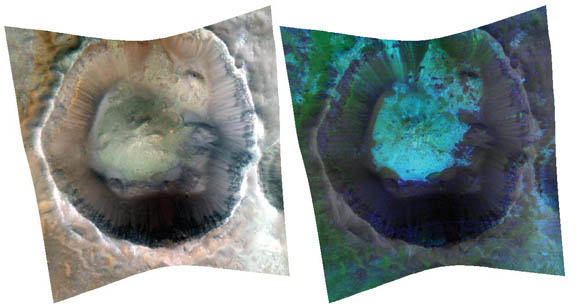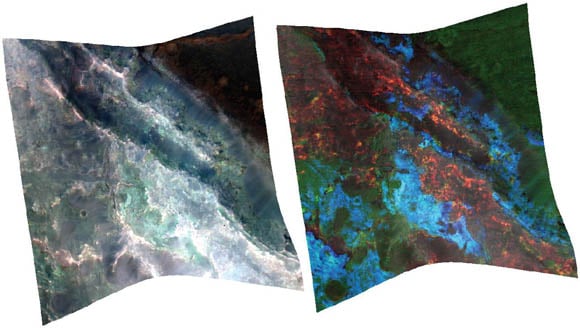This article is more than 1 year old
NASA: Martians likely lived underground
Surface water fleeting, subsurface flows enduring
If life ever existed on Mars, it's likely that its longest-lasting enclaves would be underground.
"If surface habitats were short-term, that doesn't mean we should be glum about prospects for life on Mars," says Bethany Ehlmann, the lead author of a new NASA report on the Red Planet, "but it says something about what type of environment we might want to look in."
The study, which examined different types of clays on the Martian surface, indicates that the most promising environments were likely subterranean – or, more probably, sub-Martian. "The most stable Mars habitats over long durations appear to have been in the subsurface," said Ehlmann in a statement announcing the findings.
"On Earth, underground geothermal environments have active ecosystems," she said, leaving open the possibility that such conditions may have existed – or may exist – on Mars.
The study was based on years of mapping Mars' surface minerals, conducted by both NASA and European satellites cruising around the planet, which examined more than 350 sites. From comparing the clays deposited at those sites by surface water, during a relatively brief period millions of years ago, with clays that were developed by subsurface waters, the researchers came to the conclusion that most of the action was underground.
"The types of clay minerals that formed in the shallow subsurface are all over Mars," said study co-author John Mustard. "The types that formed on the surface are found at very limited locations and are quite rare."

The blue areas in the false-color image (right) are of clays formed below the Martian surface (click to enlarge)
Clays, which form from the interaction of water and rock, were first discovered on Mars in 2005, thanks to the European Space Agency's Mars Express orbiter. Since then, scientists using that vehicle's OMEGA spectrometer and the CRISM spectrometer on NASA's Mars Reconnaissance Orbiter have been busily mapping different types of clays at thousands of Martian locations.

The red areas in the false-color image were formed more recently at shallow depths (click to enlarge)
Another indication of underground hydrothermal environments came with the discovery of the mineral prehnite, which is formed at temperatures of around 400°F (~200°C), typical of such environments.
Co-author of the study and CRISM's principal investigator, Scott Murchie, notes that there might be "limited exceptions" to the brief existence of surface water on Mars – and NASA is gearing up to investigate one of them, the Gale Crater, with the Curiosity rover that will land on the Red Planet as part of the Mars Science Laboratory mission, scheduled to launch this November 25.
While it's unlikely that Curiosity will find life in the Gale Carter, with the new evidence of long-term subsurface water on Mars we're still holding out hope for a possible meet-up with the Morlocks and Eloi – well, maybe just the Eloi. ®
